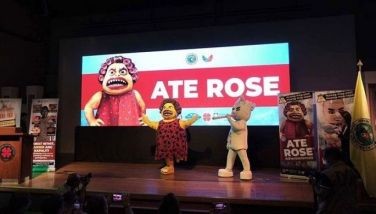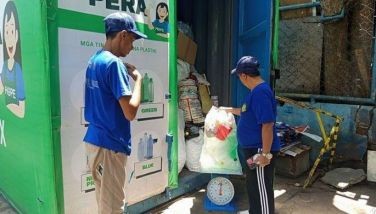Empire of the sun
On my first day in South Africa, I was bitten by a lion.
We were on safari straight from the airport after a 14-hour flight — an hour and a half from Manila to Hong Kong, and a little over 13 hours from Hong Kong to Johannesburg via South African Airways. It was certainly a pleasant ride, but like my companions, I felt physically beaten up by the long trip. I could think of nothing else but to jump into a shower then sleep until I grew a beard.
But the clear skies — a shade of blue so rich and deep that it actually hurt my eyes — assaulted me and quite decidedly kept me up. Not that I minded much; it had been awhile since I’d been physically awestruck by anything that wasn’t a pair of shoes on sale. It seemed like a sign to let South Africa show me what it had to offer, whatever that may be. And if it must take a bite out of me in the process, why not let it?
Kingdom animalia
To be fair, the lion in question was just a five-month-old baby. We had a two-minute encounter with the cubs at the Lion Park in Johannesburg, and while everyone else was wary about approaching the little things, I eagerly walked towards them for a cuddle.
Our guide had warned us not to touch their tails — so guess which part I was petting? Next thing, the cub turned to me, saw my bright pink outfit, and quite literally pawed it for a nibble. I suppose it was the first time the cub had seen someone visit him in a fuchsia Dorothy Perkins circle skirt (lions are particular about Topshop, perhaps).
This became apparent once again as we set off to hunt for our first meal. Carnivore is a Johannesburg restaurant that offers game meat such as impala, crocodile and zebra that is grilled in a huge pit. Servers will keep putting food on your plate until you tell them to stop. It’s a protein-heavy meal that’s definitely not for anyone who’s only into salad.
Our guide Hendrik explained to us that the meat that Carnivore served came from the spoils of hunting season in Africa. When you hunt for game in the bush, you are only allowed to take home a hunting trophy, but not its meat. It may sound cruel, but locals have said that hunting is an integral part of South Africa’s history, economy and even its agriculture. If no one hunts down the large predators, they end up destroying crops, using up resources, and affecting livelihood.
Thankfully, we had ample time to digest our lunch and food for thought en route to our first hotel. Just two hours from Johannesburg is The Palace of the Lost City, which looks less like a five-star hotel and more like an African kingdom. Situated among lush greenery, wild animals, and miles of gorgeous scenery laid out against architecture meant to evoke a lost African tribe, the Palace was like Coming to America’s Zamunda come to life. No Eddie Murphy to be found, though. I checked.
Not only were its bedrooms gorgeous, they also offered easy access to the gardens, although the doors automatically lock up to keep out the wild monkeys that can be found hanging in the bush surroundings. (Wild monkeys! The only wild monkeys I know that roam around Manila are in politics.) As it sits right at the heart of the Sun City complex, where casinos, other hotels, and villas can also be found, The Palace can easily access resort facilities. There’s a wave pool with sand, a bridge with a simulated earthquake (because why not?) and an entertainment center for children with arcades plus a movie theater, to name a few.
But the best part of Sun City, I think, is its close proximity to Pilansberg National Park. Having grown up only knowing zoos and pet stores, it was quite refreshing to be able to encounter animals in their natural habitat. Giraffes, zebras and monkeys roamed freely and relatively undisturbed. We even saw an adult male lion lazing about the road just to scope out the crowd that was eagerly taking his photo; ridiculous to think of us being close to it without any shackles.
People pleasing
While the hippos’ cuteness was being called into question, I have nothing but kind things to say about South Africans. There are 11 official languages here, including English and Afrikaans. Still, it’s easy to communicate with everyone because not only are they nice, they’re pretty well versed in English too.
Their humor can be quite similar to Filipinos’, especially among the colored people of Cape Town (this is the colloquial term for people of color here, not a slur). At Richard’s Supper Stage in Cape Town, guests are treated to a cabaret-like show where the gags are equal parts physical and pun-laden. Best of all, they like belting out diva hits, just like us. But beyond their humor, I find that South Africans are among the nicest people I’ve met — salt of the earth folks, no fuss, and very little bull. I guess this is how foreigners perceive Filipino warmth, and if so, then I understand why now.
What I didn’t expect is that some of them would have a bit of familiarity with Filipino culture as well. I was buying an ostrich egg from a curio shop when the porter, a young black man, asked me where I came from.
“From the Philippines,” I told him.
“Ah, Philippine! My favorite show is from Philippine,” he announced as he packed my ostrich egg. “It’s called Got to Believe. Philippine but English… Subtitles? Very nice. You know it?” He then proceeded to ask me if he could go back to the Philippines with me so he could meet the actors.
I just laughed and thanked him. But it’s good to know that even from 10,000 kilometers away, Daniel Padilla and Kathryn Bernardo can make teen hearts beat faster.
Cape Town kwassa kwassa
At that point I thought there couldn’t possibly be more. I had only been in Johannesburg for a few days, but already I could feel it starting to own a part of me already. But I was told to save some space for Cape Town. Because if there’s any part of South Africa that deserves to take your breath away, that might just be the place.
Cape Town prides itself on its high ethnic diversity — as a port for the first European ships heading to India, Cape Town has a high population of colored people. The coloreds, as they are colloquially known, largely descend from the slaves from India, Malaysia, and Indonesia.
I’d like to think that Cape Town is one of the few places in the world where God wanted to show off. While cities like London and Paris are beautiful for their architecture and manmade structures, Cape Town is breathtaking for its natural resources. The sky is the same radiant blue, and anywhere you go affords you a glimpse of Table Mountain — from the Crystal Tower Hotel located in a burgeoning business district to Table Bay Hotel, where one can enjoy croissants while marveling at the view.
We only had one full day in the city, so there was a lot of rushing about between locations. Nothing on our itinerary disappointed, though. From seeing the edge of Africa at the Cape of Good Hope, the lobster lunch at the Fish Hoek Beach, to seeing the wild penguins at Boulders Beach, the Cape was full of varying shades of beauty. Even a week wouldn’t be enough to cover every inch of the place.
Still, nothing in Cape Town prepared me for the peak of Table Mountain. We weren’t supposed to go up, because our guide received reports that there was very little visibility on top. At the last minute, we decided to take a chance anyway. It’s a two-hour hike, but they’ve built a nifty cable car that rotates as it goes up so everyone gets to see the view. From any angle, it’s quite a trip. (The cable car can be a little nerve-wracking, even for folks without a fear of heights, especially because part of it is open-air.)
Whatever means one takes to reach the top is worth the trouble. Table Mountain may not be the tallest peak in the world — not even in South Africa — but it hit me with some kind of strange magic. The air was crisp, the sun was about to set, and one side of the mountain was flanked by a blanket of clouds. As I squinted against the sunlight, I had to wonder how South Africans could live among all this beauty and not get overwhelmed all the time. I sure would.
I didn’t leave South Africa with a heavy heart. How could I, when I felt unbearably lighter? I may have left a piece of me in that place. As I watched the space between me and the runway of OR Tambo International Airport become bigger, I was beginning to feel pangs of a familiar sensation: homesickness. How South Africa managed to feel like home so quickly, I can’t explain. But I guess I found in it the same thing that those Portuguese explorers discovered on its shores more than half a century ago. It’s a haven, a safe place, an anchor against the perilous tides. It hurts to leave Africa, even if you don’t live there. Maybe that’s because it lives in you.
* * *
Visit South Africa through South African Airways, Africa’s most awarded airline. There are daily flights from Johannesburg to Hong Kong (depart 17:25, arrive 12:25 +1 day) and Hong Kong to Johannesburg (depart 23:50, arrive 7:20 +1 day). For further details, visit http://www.flysaa.com.
Enjoy the best-guided journeys through Africa with Thompsons Gateway-Africa. For inquiries, contact their Singapore office at +65 6344 9866 or visit their website at http://www.thompsonsafrica.com.




















